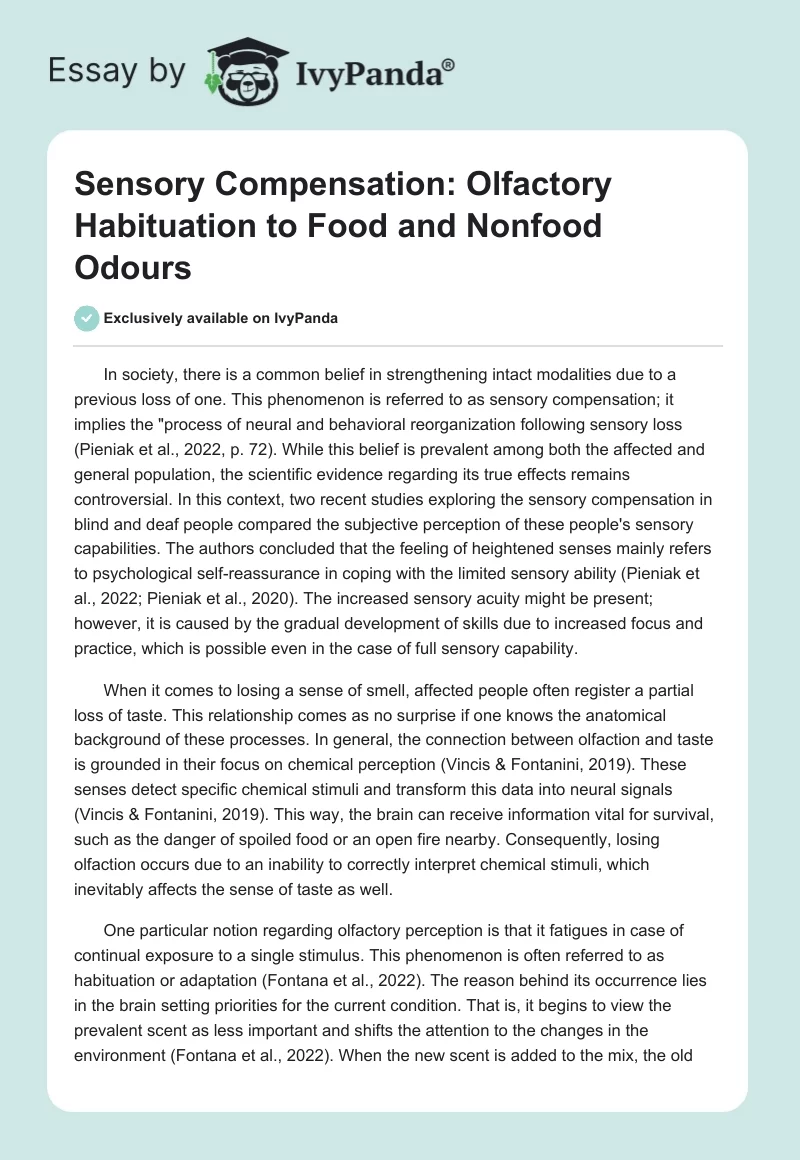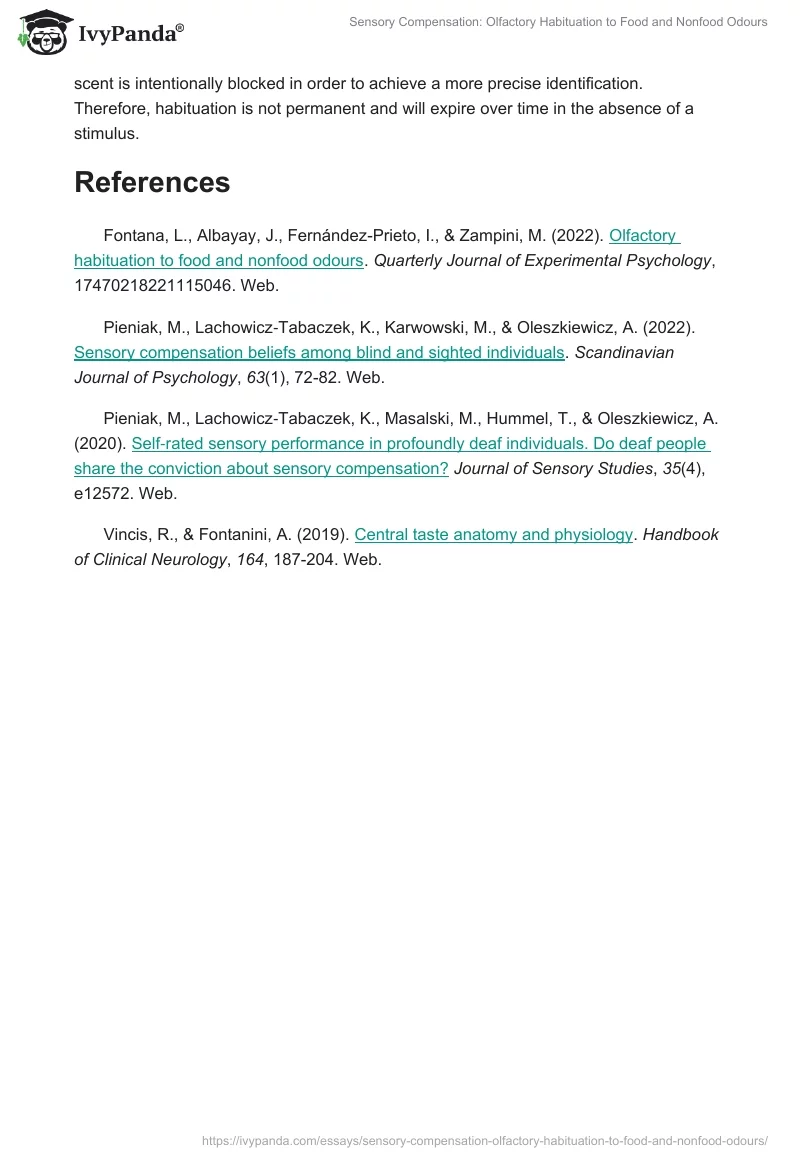In society, there is a common belief in strengthening intact modalities due to a previous loss of one. This phenomenon is referred to as sensory compensation; it implies the “process of neural and behavioral reorganization following sensory loss (Pieniak et al., 2022, p. 72). While this belief is prevalent among both the affected and general population, the scientific evidence regarding its true effects remains controversial. In this context, two recent studies exploring the sensory compensation in blind and deaf people compared the subjective perception of these people’s sensory capabilities. The authors concluded that the feeling of heightened senses mainly refers to psychological self-reassurance in coping with the limited sensory ability (Pieniak et al., 2022; Pieniak et al., 2020). The increased sensory acuity might be present; however, it is caused by the gradual development of skills due to increased focus and practice, which is possible even in the case of full sensory capability.
When it comes to losing a sense of smell, affected people often register a partial loss of taste. This relationship comes as no surprise if one knows the anatomical background of these processes. In general, the connection between olfaction and taste is grounded in their focus on chemical perception (Vincis & Fontanini, 2019). These senses detect specific chemical stimuli and transform this data into neural signals (Vincis & Fontanini, 2019). This way, the brain can receive information vital for survival, such as the danger of spoiled food or an open fire nearby. Consequently, losing olfaction occurs due to an inability to correctly interpret chemical stimuli, which inevitably affects the sense of taste as well.
One particular notion regarding olfactory perception is that it fatigues in case of continual exposure to a single stimulus. This phenomenon is often referred to as habituation or adaptation (Fontana et al., 2022). The reason behind its occurrence lies in the brain setting priorities for the current condition. That is, it begins to view the prevalent scent as less important and shifts the attention to the changes in the environment (Fontana et al., 2022). When the new scent is added to the mix, the old scent is intentionally blocked in order to achieve a more precise identification. Therefore, habituation is not permanent and will expire over time in the absence of a stimulus.
References
Fontana, L., Albayay, J., Fernández-Prieto, I., & Zampini, M. (2022). Olfactory habituation to food and nonfood odours. Quarterly Journal of Experimental Psychology, 17470218221115046. Web.
Pieniak, M., Lachowicz‐Tabaczek, K., Karwowski, M., & Oleszkiewicz, A. (2022). Sensory compensation beliefs among blind and sighted individuals. Scandinavian Journal of Psychology, 63(1), 72-82. Web.
Pieniak, M., Lachowicz‐Tabaczek, K., Masalski, M., Hummel, T., & Oleszkiewicz, A. (2020). Self‐rated sensory performance in profoundly deaf individuals. Do deaf people share the conviction about sensory compensation?Journal of Sensory Studies, 35(4), e12572. Web.
Vincis, R., & Fontanini, A. (2019). Central taste anatomy and physiology. Handbook of Clinical Neurology, 164, 187-204. Web.


